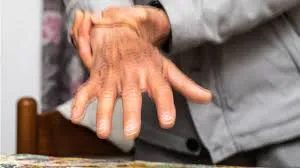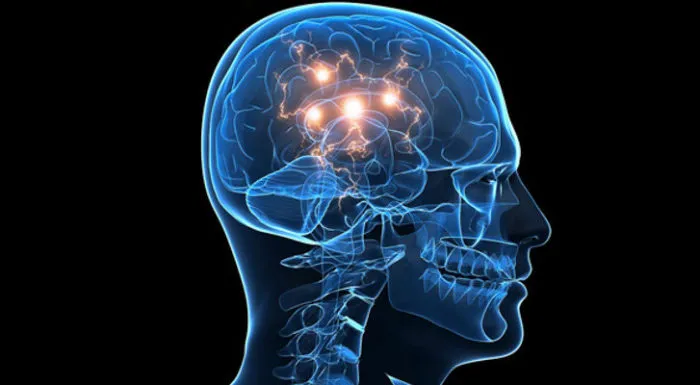
Fuente/Source
Parkinson
Hola amigos de hive hoy quería contarles sobre la enfermedad de Parkinson, esta es un tipo de trastorno que afecta al movimiento y a las funciones cognitivas. Es una enfermedad producida por un proceso neurodegenerativo y es multisistémico que afecta al sistema nervioso central lo cual genera la aparición de síntomas relacionados con el movimiento, esta enfermedad también puede ocurrir una vez que las células nerviosas (neuronas) no generan suficiente cantidad de una sustancia química fundamental en el cerebro conocida como dopamina. En ciertos casos puede originarse debido a los genes, sin embargo, la mayor parte no parece darse entre miembros de una misma familia.
Parkinson
Hello hive friends today I wanted to tell you about Parkinson's disease, this is a type of disorder that affects movement and cognitive functions. It is a disease produced by a neurodegenerative process and is multisystemic that affects the central nervous system which generates the appearance of symptoms related to movement, this disease can also occur once the nerve cells (neurons) do not generate enough of a fundamental chemical substance in the brain known as dopamine. In certain cases it can originate due to genes, however, most do not seem to occur among members of the same family.
Posibles causas
En la enfermedad de Parkinson hay varias teorías sobre su causa, una de ellas es sobre la sinucleína (una proteína del encéfalo que ayuda a las neuronas) forma pequeñas acumulaciones llamados cuerpos de Lewy en las neuronas. Estos cuerpos de Lewy están compuestos por sinucleína mal plegada. La sinucleína se acumula en varias regiones del cerebro, particularmente en la sustancia negra (la parte interior del cerebro), y altera la funcionalidad cerebral. Los cuerpos de Lewy se acumulan con cierta frecuencia en otras partes del cerebro y del sistema nervioso, lo que sugiere que pueden estar implicados en otros trastornos.

Fuente/Source
possible causes
In Parkinson's disease there are several theories about its cause, one of which is that synuclein (a protein in the brain that helps neurons) forms small accumulations called Lewy bodies in neurons. These Lewy bodies are composed of misfolded synuclein. The synuclein accumulates in various regions of the brain, particularly in the substantia nigra (the inner part of the brain), and impairs brain function. Lewy bodies accumulate with some frequency in other parts of the brain and nervous system, suggesting that they may be involved in other disorders.
Síntomas
Los primeros síntomas de la enfermedad de Parkinson son leves y se van haciendo cada vez más notorios con el paso del tiempo. El cuadro inicial típico registra dolores en las articulaciones, dificultades para realizar movimientos y agotamiento.
Específicamente encontramos síntomas como: temblores estos pueden ser lentos y rítmicos. Predominan estando en reposo y disminuyen al hacer un movimiento. Esto no se presenta en todos los pacientes.
Bradicinesia: Esto es la lentitud de movimientos voluntarios y automáticos, presentan falta de expresión de la cara, tienen una técnica escritura lenta.
Problemas posturales: Tenemos a la inclinación del tronco y la cabeza hacia delante. Los Codos y rodillas en las personas con Parkinson parecen estar como encogidos.
Problemas al andar:Presentan marcha lenta, arrastran los pies. A veces se dan pasos rápidos y cortos, presentan dificultad para pararse.
Además de estos tienen problemas de equilibrio, trastornos del sueño, rigidez muscular entre otros síntomas.
Symptoms
The first symptoms of Parkinson's disease are mild and become increasingly noticeable over time. The typical initial picture is one of joint pain, movement difficulties and exhaustion.
Specifically we find symptoms such as: tremors these can be slow and rhythmic. They predominate at rest and decrease with movement. This is not present in all patients.
Bradykinesia: This is the slowness of voluntary and automatic movements, lack of facial expression, slow writing technique.
Postural problems: We have the inclination of the trunk and head forward. The elbows and knees in people with Parkinson's appear to be shrunken.
Gait problems: They have slow gait, shuffling feet. Sometimes they take quick and short steps, they have difficulty in standing.
In addition to these they have balance problems, sleep disorders, muscle stiffness among other symptoms.
Diagnóstico
El diagnóstico de la patología de Parkinson está con base en la clínica, pues no se ha reconocido ningún marcador biológico de esta patología. Por esto, el diagnóstico de la misma se basa en la detección de la característica tríada rigidez-temblor-bradicinesia y en la falta de indicios atípicos, aunque además tiene trascendencia la exclusión de otros probables trastornos mediante técnicas de imagen cerebral o de analíticas sanguíneas.
El diagnóstico puede llegar a revestir una enorme dificultad. Esta complejidad en la diagnosis es corriente que aparezca en los primeros estadios de la patología, una vez que los indicios que el paciente muestra tienen la posibilidad de ser atribuidos a otros trastornos. Efecto directo de este suceso es la preparación de diagnósticos equivocados.
Es fundamental en la semiología de la patología de Parkinson, hacer un intensivo interrogatorio para consultar otras probables razones que diferencien a la patología de Parkinson con otros probables síndromes extrapiramidales.
Diagnosis
The diagnosis of Parkinson's disease is clinically based, since no biological marker of this pathology has been recognized. Therefore, the diagnosis is based on the detection of the characteristic rigidity-tremor-bradykinesia triad and on the lack of atypical signs, although the exclusion of other probable disorders by means of brain imaging techniques or blood tests is also important.
Diagnosis can be extremely difficult. This complexity in the diagnosis is common in the early stages of the pathology, once the signs that the patient shows have the possibility of being attributed to other disorders. A direct effect of this is the preparation of erroneous diagnoses.
It is fundamental in the semiology of Parkinson's pathology, to make an intensive interrogation to consult other probable reasons that differentiate Parkinson's pathology with other probable extrapyramidal syndromes.
Tratamientos
Esta es una patología crónica que, de momento, no tiene curación. El objetivo del tratamiento es reducir la velocidad de progresión de la enfermedad, controlar los síntomas y los efectos secundarios derivados de los fármacos que se usan para combatirla. Existen distintos tipos de tratamientos entre ellos tenemos:
Tratamientos farmacológicos
Donde se utilizan fármacos para controlar los síntomas de la enfermedad, entre estos fármacos tenemos: Dopamina, Levodopa, bromocriptina, selegilina, amantadina.
Tratamiento quirúrgico
Solo está indicada en un 5 por ciento de los pacientes, Solamente se intervendrá en las partes dañadas del cerebro. Los criterios de inclusión para intervención quirúrgica contemplan incapacidad funcional muy grave, ausencia de demencia, edad inferior a 70 años y diagnóstico confirmado. Entre las técnicas quirúrgicas que se utilizan para aliviar los síntomas de Parkinson se encuentra la palidotomía y la estimulación eléctrica.
Treatments
This is a chronic pathology that, for the moment, cannot be cured. The objective of the treatment is to reduce the speed of progression of the disease, control the symptoms and the side effects derived from the drugs used to combat it. There are different types of treatments among them we have:
Pharmacological treatments.
Where drugs are used to control the symptoms of the disease, among these drugs we have: Dopamine, Levodopa, bromocriptine, selegiline, amantadine.Surgical treatment
It is only indicated in 5% of patients. Only the damaged parts of the brain will be intervened. Inclusion criteria for surgical intervention include very severe functional disability, absence of dementia, age less than 70 years and confirmed diagnosis. Surgical techniques used to alleviate Parkinson's symptoms include pallidotomy and electrical stimulation.
Datos curiosos
El párkinson es la segunda enfermedad neurodegenerativa en prevalencia e incidencia después del Alzheimer.
Se calcula que surgen entre 20 y 25 nuevos casos de enfermos de párkinson por cada 100.000 habitantes.
La enfermedad afecta aproximadamente a 4 millones de personas en todo el mundo.
Personalidades destacadas como Michael J. Fox, Franco, Salvador Dalí, Mohammed Ali o Mao Zedong padecen o padecieron párkinson.

Fuente/Source
Curious facts
Parkinson's is the second neurodegenerative disease in prevalence and incidence after Alzheimer's disease.
It is estimated that there are 20 to 25 new cases of Parkinson's disease per 100,000 population.
The disease affects approximately 4 million people worldwide.
Prominent personalities such as Michael J. Fox, Franco, Salvador Dalí, Mohammed Ali or Mao Zedong suffer or suffered from Parkinson's disease.
Fuentes de interes/sources of interest